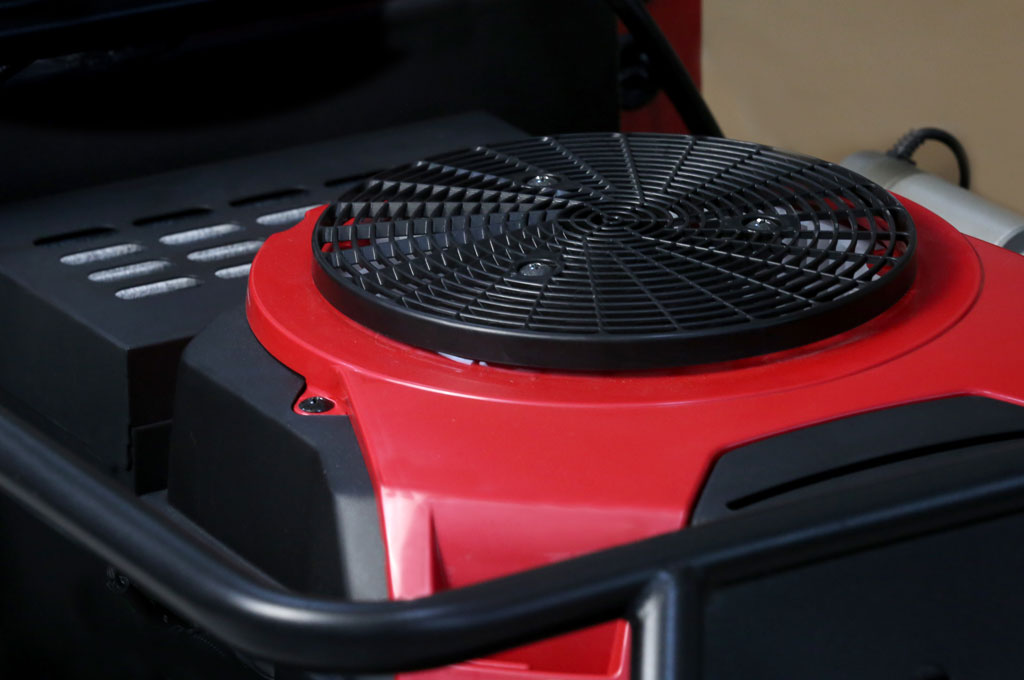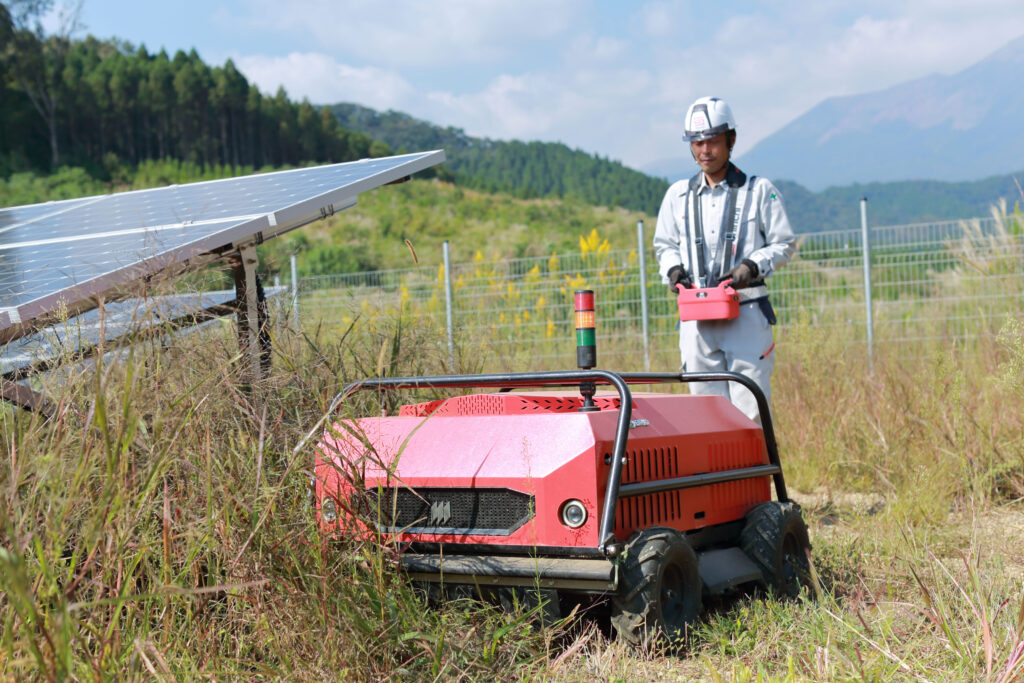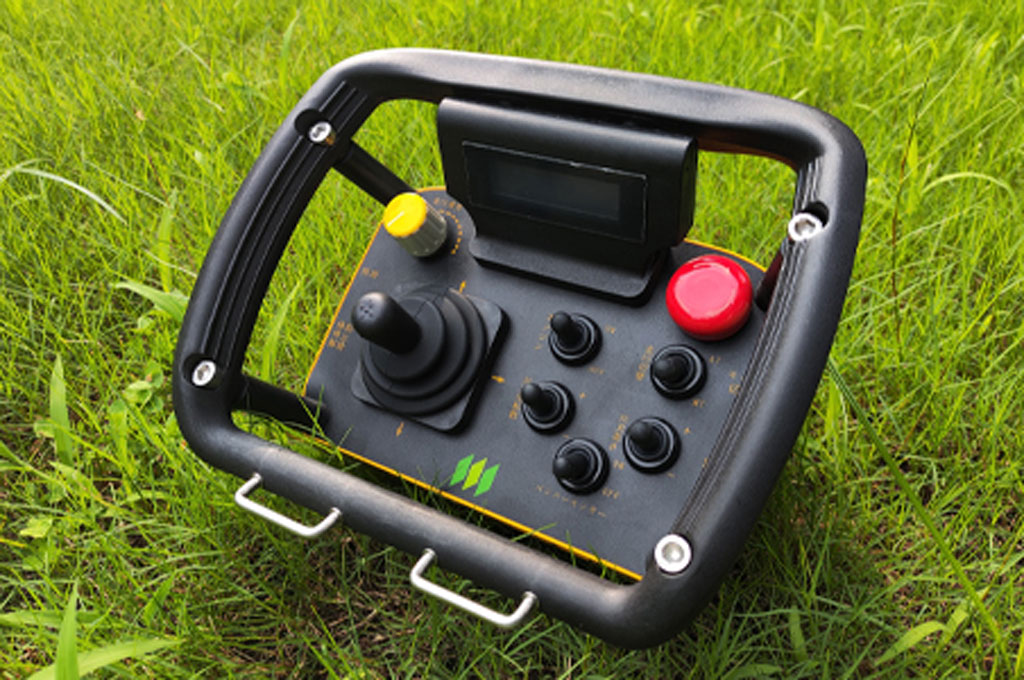Ultimate Guide for Solar Farms, Airports, and Large Facilities
Maintaining vegetation in large industrial areas such as solar power plants, airports, and slope-heavy facilities is a demanding and costly task. Traditional ride-on mowers or manual crews often struggle with efficiency, safety, and consistency in such challenging terrains. In recent years, hybrid remote-controlled lawn mowers have emerged as a reliable solution, offering both fuel efficiency and strong adaptability for industrial-scale mowing. This guide explains how to choose the right model, highlights practical applications, and compares leading technologies.

What Is a Hybrid Remote-Controlled Lawn Mower?
Hybrid mowers combine fuel-powered engines with electric motors to deliver efficient, continuous mowing performance. A key innovation is the range extender principle:
- The engine works solely as a generator to produce electricity.
- The electric motor powers both driving and mowing functions.
This design ensures smoother operation, reduced fuel consumption, and longer runtime. Unlike pure electric models, hybrid mowers can operate in areas without charging infrastructure, making them especially suitable for remote solar farms, hilly landscapes, and airports where long working hours are required.
Case Example: The MC700 Hybrid Remote-Controlled Mower
A practical demonstration of hybrid technology is the MC700 crawler-type remote mower, developed with demanding industrial use in mind.
Key features include:
- Extended Power System: Built-in generator + lithium battery for over 3.5 hours of runtime.
- Remote Control: Up to 200 meters range, allowing safe and precise operation.
- High Cutting Capacity: 550 mm cutting width, covering more than 3,000㎡ per hour.
- Terrain Adaptability: Crawler tracks provide excellent stability, capable of climbing slopes up to 40°.
With this combination of endurance and versatility, the MC700 demonstrates why hybrid remote-controlled mowers are increasingly popular in large-scale vegetation management.
Key Factors to Consider Before Buying
1. Power and Runtime
For industrial sites, long operation cycles are critical. Evaluate the battery capacity, fuel efficiency, and whether the mower uses a range extender system for sustained performance.
2. Terrain and Slope Handling
Solar farms and airports often include steep slopes, gravel paths, or muddy patches. A mower with crawler tracks and slope capacity above 35–40° ensures safe operation in difficult conditions.
3. Cutting Efficiency
Check the cutting width, blade speed, and adjustable height settings. A wider deck and high blade RPM increase coverage per hour, reducing total mowing days.
4. Remote Control Functionality
The responsiveness, control range, and precision of the remote system directly impact both safety and efficiency. Industrial-grade remotes can manage speed, blade height, and steering with minimal delay.
5. Maintenance and Longevity
Hybrid systems require routine checks, but industrial models are designed for durability. Choose equipment with strong manufacturer support and easy-to-replace parts.
6. Cost and ROI
While hybrid mowers involve a higher upfront investment, they significantly lower labor costs and fuel consumption in the long run. Many operators in solar and airport facilities report achieving a return on investment within 2–3 mowing seasons.
Real-World Benefits of Hybrid Remote-Controlled Mowers
- Efficiency: One machine can replace multiple manual operators.
- Safety: Workers no longer need to enter hazardous or steep areas.
- Sustainability: Hybrid systems reduce fuel consumption and emissions.
- Scalability: Ideal for facilities spanning hundreds or thousands of acres.
Final Thoughts
Selecting the right hybrid remote-controlled lawn mower is not only about comparing specifications—it’s about aligning the machine with your facility’s operational needs. For solar farms, airports, and other industrial landscapes, hybrid mowers deliver a balance of power, efficiency, and safety that traditional methods cannot match.
Whether your priority is cost savings, slope management, or sustainability, investing in hybrid mowing technology ensures reliable vegetation control while supporting long-term operational efficiency.


